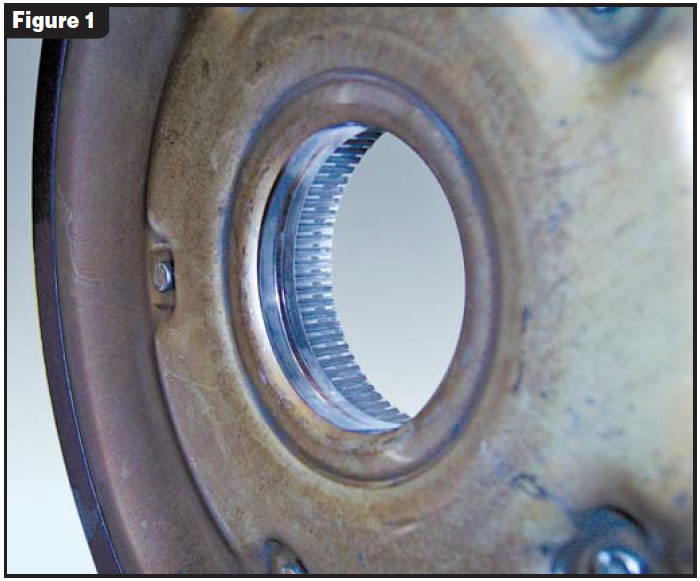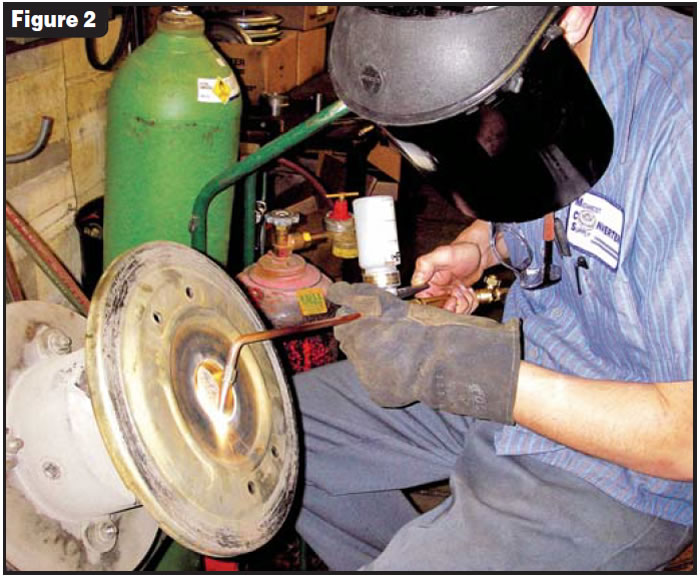
Torque Converter Tech Tips
- Author: Ed Lee
The problem of bore wear on torque-converter-clutch pistons has been around since lockup torque converters were born. The rotational restriction on the pistons is handled by splines, pins or fingers. But centering the pistons is generally the sole responsibility of the bore. Any out-of-balance movement of the piston will cause the piston bore to scuff against the turbine hub when it moves to apply or release the clutch. Indexing the piston to the turbine and balancing this unit helps minimize bore wear. (See the article on indexing TCC-piston damper assemblies to turbines, Transmission Digest, March 2006.)
But having a perfectly balanced assembly and expecting it to remain that way throughout its lifespan is not realistic. Torque-converter rebuilders will always have to deal with piston-bore wear.
The area of the piston bore that is the sealing surface seldom shows any wear because it is not used for centering. Of course, the rest of the bore will wear faster because of the small surface area remaining.
The E4OD piston in Figure 1 is a good example of bore wear. Machining the piston and installing a replacement sleeve is the current industry fix. This method works well, and most replacement sleeves are harder than the original bore, for longer life.

Dick Lewis of Midwest Converter Supply decided to address his bore problems at a different level. Dick’s shop renews the bore surface by spray-welding the original bore and then remachines the bore to its original dimension (see Figure 2).

The piston is placed onto a standard welding turntable. A sleeve attached to the turntable centers the piston and also keeps any welding debris from getting into the damper assembly. The turntable is set at a 45° angle, and the piston’s own weight keeps it in position.
The torch operator shown in Figure 2 is using a “Stoody” jet-spray torch (model No. JS-100, made by Thermadyne Corp.). The media used for welding is held in the canister mounted on the torch. The type of welding media used controls the hardness of the finished weld. For this application media No. HSW25 was used, giving a finished hardness of 36 to 38 Rockwell – hard enough to extend the life expectancy of the part and still soft enough for machining to a good surface finish. The amount of the weld being applied is controlled by the lever on the torch below the welder’s right thumb.
There are many different gas combinations that will work with this torch, but the oxygen/acetylene combination being used in this instance seems to work best. The welding process takes about four to five minutes from start to finish.
Normally, bad bores are found during the cleanup process and repaired before bonding. But if you don’t discover a bad bore until after the piston is bonded, you can still make your bore repairs on the bonded piston.

Ed Lee is a Sonnax technical specialist who focuses on issues of interest to torque-converter builders. ©Sonnax 2006













